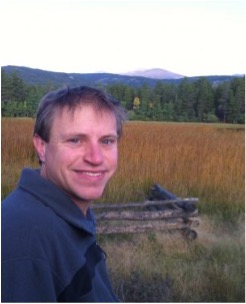Steven P Loheide II, PhD
University of Wisconsin - Madison
Dr. Steven Loheide is the Distinguished Professor of Water Resources Engineering in Civil and Environmental Engineering, Geological Engineering, Freshwater and Marine Sciences and Water Resource Management at the University of Wisconsin – Madison. He received his BS in Environmental Chemistry and Geology from the University of Northern Iowa (1999), MS in Geology from Indiana University (2001), and PhD in Hydrogeology from Stanford University (2006). As an ecohydrologist, Loheide’s research focuses on the interactions between ecological and hydrological processes in natural and built systems with special attention to the role of groundwater. His approaches use a combination of field data, remote sensing, and numerical modeling to understand the feedbacks between vegetation patterning, plant water use, soil moisture availability, groundwater regimes, stream-aquifer interactions, and agricultural and urban water management. This work is focused on improving the scientific basis for stream, floodplain, meadow, and wetland restoration efforts; quantifying the provisioning of hydrologic ecosystem services under current and future scenarios; and evaluating interactions among groundwater and urban, agricultural, and natural environments.
Lecture 1 – Trees are Groundwater Stakeholders Too
Groundwater dependent ecosystems depend on groundwater to thrive. Groundwater dependent ecosystems include wetlands and riparian forests that border streams and are well recognized in arid regions where lush vegetation may only exist where shallow groundwater is accessible to plant roots. However, in humid, temperate regions it’s often assumed that forests do not rely on groundwater because precipitation is typically sufficient to meet the plant water demand. We tested this assumption by quantifying groundwater's influence on tree growth and transpiration in northern humid forests with sandy soils. Time-series of groundwater levels show that groundwater levels fall during the daylight hours when transpiration occurs and recover during nighttime periods in some of the observation wells we monitored. We used these diurnal groundwater fluctuations to quantify groundwater consumption and found that northern Wisconsin’s forests consume groundwater when and where it is within 3m of the land surface. Furthermore, we analyzed tree growth response by coring trees and measuring annual tree ring increments. We found that trees in regions with shallow groundwater had up to twice as much growth as indicated by tree rings compared to regions where groundwater was deeper than 5m. Finally, we employed remote sensing techniques that compared vegetation indices during wet and dry periods and mapped the degree of groundwater influence across the study area. Counter to conventional wisdom, this research demonstrates that shallow groundwater subsidizes evapotranspiration even in humid forests and enhances forest productivity. Recognition of forests as groundwater users is important in guiding sustainable water and forest management decisions in the region.
Lecture 2 – Groundwater Recharge Regimes are in Flux
Groundwater provides drinking water for people, supports agriculture, and sustains healthy ecosystems, but has been depleted in some regions due to overuse. Groundwater is replenished through the process of groundwater recharge. After precipitation infiltrates into the soil, a portion is returned to the atmosphere through evapotranspiration, but some may percolate downward until it reaches the water table and recharges the aquifer. The process of groundwater recharge varies substantially in space and through time due to soil type, weather conditions, and vegetation. Case studies will be used to illustrate how groundwater recharge regimes are altered by changes in climate and shifts in land use. Groundwater level responses to recharge events were used to quantify groundwater recharge rate differences at locations with different land cover. Numerical modeling was used to diagnose the causes of changing recharge rates and predict the consequences of these changes across a range of environmental settings. A process based understanding of the factors that drive changes in groundwater regimes is critical to sustainable management of groundwater resources under environmental change and avoiding or minimizing unintended consequences of human activities.
2026 Darcy Lecture Sponsors
S.S.Papadopulos & Associates
Woodard & Curran Inc.

